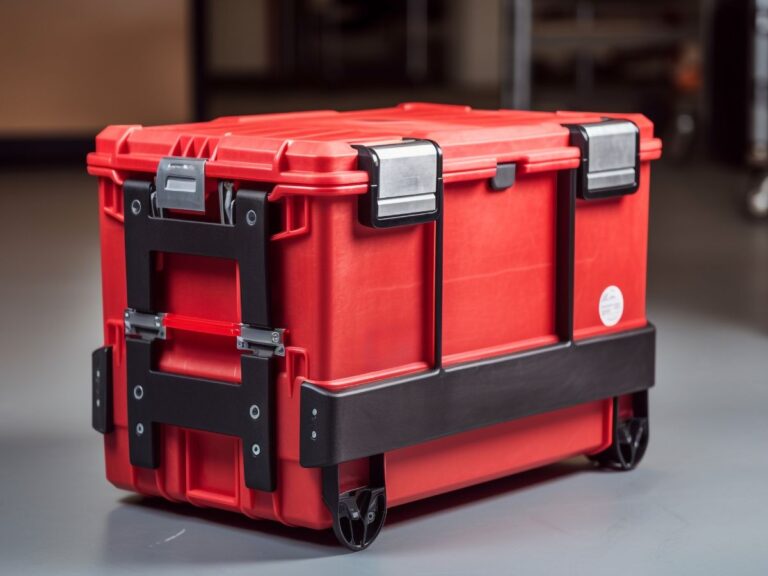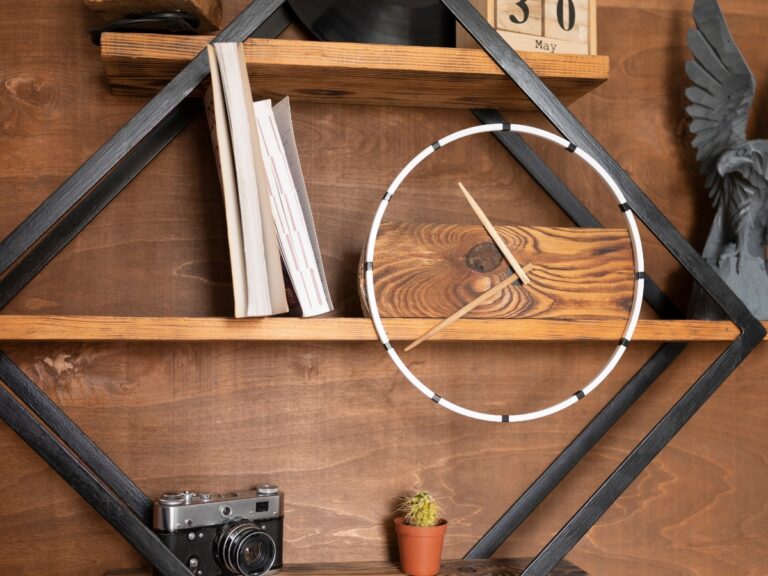Are you tired of battling clutter or yearning for a...
Read MoreHow To Get into Woodworking: A Beginners Guideline
- WWPN Staff
Depending on who you ask, woodworking means different things to different people – for some, it’s a passion, while others see it as their bread and butter. However, what’s common is that woodworking is a skill of productive craft involving cutting, shaping, and joining wood. It helps to create utilitarian objects like chairs and cabinets to decorative items like wall clocks and sculptures.
With every project requiring intense concentration, you boost mental sharpness and develop creative skills. Moreover, spending hours woodworking acts as a distraction from negative feelings and thoughts ideal way to combat depression and anxiety.
Besides, transforming simple wood into attractive woodwork pieces also helps to improve mood and save pockets for home decor.
Though woodworking is fairly simple to learn and welcoming to all, it demands competency, perseverance and commitment. There is much to explore and grasp – appropriate tools and materials, the right techniques for working with them, preventive measures and infinite ideas.
But no need to fret! We have got your back.
This post will walk you through the A to Z of the oldest craft to help you take up woodworking as a hobby or profession.
Essential Tools Required for Woodworking Projects
Starting your woodworking journey requires the right set of tools in your workshop. But, with the vast array of tools available in the market, it is common for an amateur to feel overwhelmed and be worried about the stress on their wallet.
However, let’s say right off the bat that getting started does not have to be expensive. Beginners’ woodworking tools are something basic that makes working easier, allowing you to get the hang of the job. Plus, these are easily available in local stores and with online retailers, who can further help you select the ones that would be perfect for your very first project.
Here’s a list of the essential tools required for taking up this craft:
Combination Square
Without a measurement tool, you can’t come up with a decent woodworking project, bringing a combination square into the picture. It is ideal for marking wood joints and cutting at 90- and 45-degrees angles. Another use of combination square that many people are unaware of is using as a depth gauge to measure depth and transferring a mortise to a tenant for cutting.
Besides, you can also make use of it for drawing parallel lines, setting up accurate heights of blades or router bits, or precisely positioning parts using project assembling.
Table Saw
Most beginners of woodworking invest in a table saw early in the game, which is undoubtedly the right thing to do. No tool out there makes it easier for you to make straight and square cuts better than this tool. To ensure precision, you can adjust blade depth and angles effortlessly per your project requirements.
Typically, the table saw is designed as an upside-down circular saw with an exposed blade from below the surface. You will have different types available in the market, from lighter-duty, portable to heavy-weight, versatile saws. It depends on your project, space, and wallet your choice.
Clamps
When you start with woodworking, you require clamps for everything from holding your work to final assembly, gluing panels, applying pressure and the list goes on. However, you do not have to bring home every clamp available. As a beginner, you can get around with about eight specific ones. You can start by purchasing a pipe clamp that comes with a set of fixtures suitable for different woodworking projects.
Jigsaw
Jigsaw is a lightweight, quiet, and effective tool to have in your workshop that is easy to maneuver and comes in handy. It makes intricate cuts in wood that can be curved, straight, or serpentine. Unlike circular saws, it cuts in an up-and-down or back-and-forth movement. Besides, with this, you can hold your work in a place with one hand and make cuts with the other, ensuring precision and accuracy.
Power Drill
A power drill is a must-have tool for not just woodworking but for any DIY or home improvement projects you plan to undertake. Think of it as a support tool that helps make joinery, quick jig, fastening table tops or screwing in drawer slides. You have two choices with a power drill – cordless and corded. While the former is cheaper and more powerful, the latter promises convenience.
Palm Router
A palm router is a woodworking power tool that allows for trimming and laminating woods and other materials. Being smaller and more compact, it is considered ideal for projects that demand high precision, such as engraving, molding and rounding edges. Moreover, they can be operated comfortably with one hand and with various speed settings to deliver accuracy.
Random Orbital Sander
The final must-have woodworking tool would be a random orbital sander that is extremely beneficial as your project comes to an end. Sanding your woodworking project means removing tough blade marks and smoothing the surface to give a final finish with paint or a protective topcoat. While this task can be done by hand, using a random orbital sander will make the process a breeze and ensure efficiency.
Safety Precautions
Woodworking is an enjoyable and exciting hobby only if you follow the preventive measures that are part and parcel of it. Otherwise, it won’t take much for your vocation to become a serious threat to your life as you work in a setting close to sharp blades, aggressive tools, and dust particles. Such an environment means being at risk of electrical shocks or getting hurt while cutting. And there’s also the threat of losing the balance yourself or of the machine while working.
On these grounds, the woodshop is not a place to hurry but rather work with patience and safety. For that purpose, commit to the following safety measures listed below and make your woodworking journey successful without facing any damage or injury.
Wear Safety Equipment
The first line of defense is wearing safety equipment consisting of eyewear, gloves, and ear protection that ensures you can comfortably work on your woodworking projects.
While hearing protection is necessary when you are involved in tasks requiring powerful tools with a strong motor, and latex gloves are essential for applying finishes and paints, there is no moment in your workshop when you should be without safety glasses. Put them on you as soon as you enter and only take off when ready to leave.
Dress in Right Clothing
Dressing in the right clothes is another line of defense you must pay attention to. Avoid baggy or loose clothes as they have high chances of becoming entangled with a brand saw or cutting head. Moreover, choose long sleeve shirts and full-length pants over shorts and T-shirts. Besides, wear something comfortable that makes it easy to move your body around while working.
Avoid Drugs and Alcohol
It is common sense that you don’t mix alcohol or drugs with woodworking. Stay out of the workshop if you have taken even a single drink. You might think drinking one chilled beer won’t do much harm, but it will have devastating consequences. Being clean and sober is a must to correctly use your machine and get the job done with no injury.
In addition, if you are on painkillers or anti-depressants that make you sleepy or tired, avoid woodworking.
Make Use of a Single Extension Cord
Using more than one extension cord would result in excess use of energy and power as well as make the perfect recipe for tripping hazards and confusion in the workplace. It is best to have one heavy-duty single extension cord as you will remember to plug and unplug the power when moving from one tool to another.
Disconnect Power Cord When Changing the Blades
Always disconnect the cord from the main supply instead of switching off its button when you have to change the blade or bit on a power tool. Often, woodworkers have done serious damage to their hands by forgoing this simple rule.
Minimize Distraction
When you are called or distracted while performing an action with a power tool, remember to always take the task to a safe conclusion before turning away your attention. Moreover, when starting off, it is best to keep your phone on silent mode and away from your reach so that you are not disturbed and, subsequently, harmed in the middle of cutting a piece.
Some of the Basic Woodworking Techniques to Know About
Almost every woodworking project involves using the same basic techniques, such as cutting, jointing, assembling, and finishing. These techniques are fundamental not just for small projects, such as carving a wooden spoon, but also for larger projects, such as kitchen cabinets or shelves. Let’s take a look at them:
Joining and Planing
The first task in any woodworking project is turning the rough wood into a smooth, straight board. As such, joining is the technique to smoothen one face and square up the edge, while planing involves making the second face smooth and parallel to the first.
Sawing
Another technique to master is of cutting down wood with saws. There are many different types of saws available that are suitable for different projects. That said, always wear a safety kit when working with a saw and stay focused on the task to avoid any mishap or accident. You can create various types of cuts; however, it’s best for you with simple ones such as rip cuts, crosscuts, miters, and curves.
Drilling & Boring
The drilling technique involves creating a hole in the wood, while the boring is about removing the excess material to expand the existing hole. You can engage in the drilling process either with a handheld drill that offers the convenience of use or a stationary drill that ensures precision.
Shaping & Molding
Shaping is a woodworking technique that involves carving wood pieces into non-rectangular shapes, while molding is a strip of wood used to cover transitional areas. The latter helps to cover gaps or protect areas between corners and walls.
Finishing
Wooden surfaces often pick up dirt, scratches, and dings that leave marks. Moreover, it can also expand or shrink because of the moisture in the environment. On that note, finishing protects the wooden structure from the listed damages by adding a protective layer on the top or penetrating the exterior and strengthening it.
6 Woodworking Tips & Tricks for Beginners
Here’s how beginners in woodworking can easily master the above-given techniques and create beautiful work pieces:
- Always remember to double-check your measurements to ensure precision and accuracy while cutting.
- Learn about the different types of woods and materials available and choose the one most befitting to your project.
- Check the selected wood for defects such as staples, nails or metal materials, as it can not only make your final project weak but also harm your power tools.
- Take on practice projects to learn about different types of wood, techniques, and tools used. Plus, you can take up online classes or courses at public workshops
- Clean your workspace regularly and also ensure your power tools are in the right condition
A Basic Project to Take On: Wooden Chopping Board or Tray
Are you ready to build on something new? If yes, check out this simple, useful, and appealing project you can create without being a pro or even having a workshop. It requires basic materials and tools – and comes with simple instructions.
Hands down, the easiest thing to make is a wooden chopping board or tray for serving, as the process is the same for both. You can easily complete this project with a table saw, sandpaper, and hardwood.
- Draw a design on untreated hardwood. However, stick to a straight edge in your design if you use a circular saw.
- Second, cut your design carefully following the safety measures listed above and then sand the edges using medium grit sandpaper.
- Wipe off the board with a clean cloth to make it free of any wood dust and apply mineral oil to your wooden chopping board, or you can also paint the surface to make your tray look appealing.
- Tada! Your wooden chopping board or tray is ready.
The Bottom Line
As one of the oldest crafts in the world, woodworking is enjoying the stature of a lucrative profession and popular hobby. It spans several projects and ideas, from building wooden trays to chairs and cabinets to shelves.
However, while the basics remain the same, woodworkers use technology to build new things and create more advanced projects. Yet, it encompasses techniques like wood joinery, carving, sawing and finishing.
The good thing is you are allowed to learn at your own pace. It is relatively simple to grasp basic woodworking skills, and with every project undertaken will gain new expertise.
Hopefully, the above-given guide will help you in this challenging and exciting endeavor.




